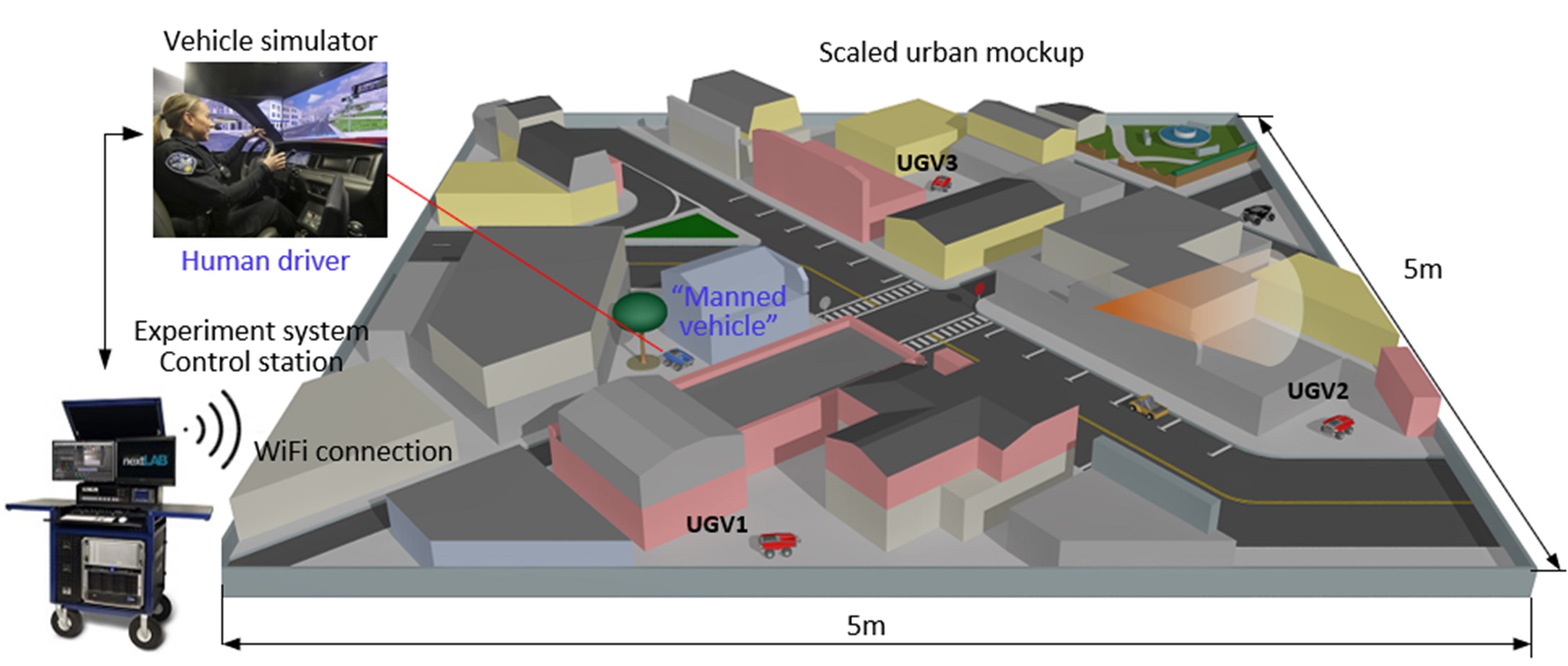Physical Simulation of a Human-Driving Vehicle in Lab Environment
Objective
Develop technology to physically simulate a human driving a manned vehicle which is represented by an unmanned vehicle in a scaled urban environment where both “manned vehicles” and autonomous vehicles are operating in the shared space. The technology can be used to support research in the areas of trusted autonomy, human-autonomy collaboration, and autonomous driving.
Motivation
With the fast advancement of robotics and autonomy technologies, heterogeneous autonomous robotic vehicles (e.g., UGVs or driverless vehicles) are expected to work along with manned vehicles in human-autonomy shared environments. Hence, the operation of those autonomous vehicles must co-operate and ensure safety in the presence of manned vehicles. However, it is very risky and also costly to test autonomous vehicles operating in a real urban environment where many manned vehicles are operating. Therefore, we need a technology and facility which ensures safe testing of multiple autonomous vehicles operating with human-driven vehicles in a shared urban environment. The technology developed on this project will address this need.
Technology Highlights
- Human-machine interface – a vehicle driving simulator to allow a human driver to participate.
- Render live video imaging from a vehicle mounted camera on the simulator’s screens.
- Operate the “manned vehicle” by a human driver through a realistic driving simulator – a true human-in-the-loop and hardware-in-the-loop simulation system.
- All the software is ROS based and thus easy to transfer and further development.

A similar product
The technology is, in part, similar to the Sony’s Mario car game:
Difference from Sony’s Mario car game
Our technology is more realistic than Mario in terms of addressing human factors and performance because Mario uses a hand-held controller to “drive” the vehicle but our solution uses a real driving simulator to drive the vehicle and hence, in our case the driver will have realistic driving experience (with the steering wheel, brake pedal, gas pedal, gear shift, instrument panel, driving seat, etc.).
Demonstration